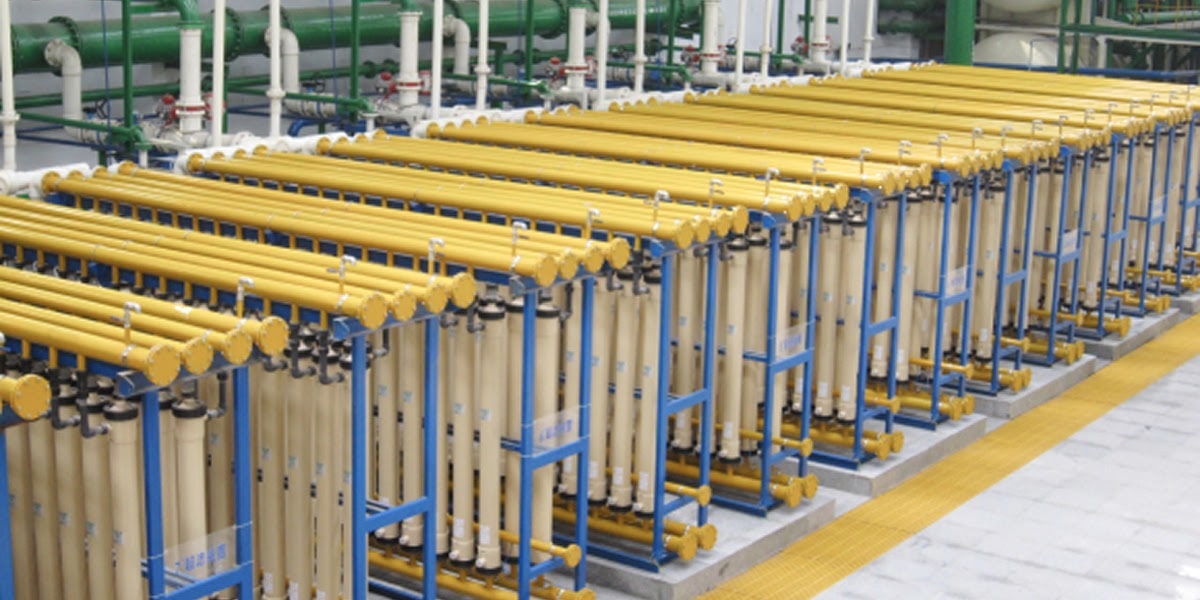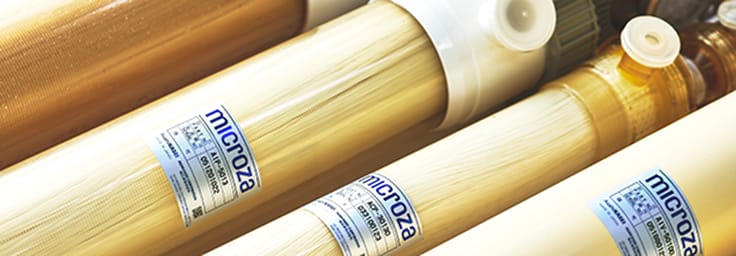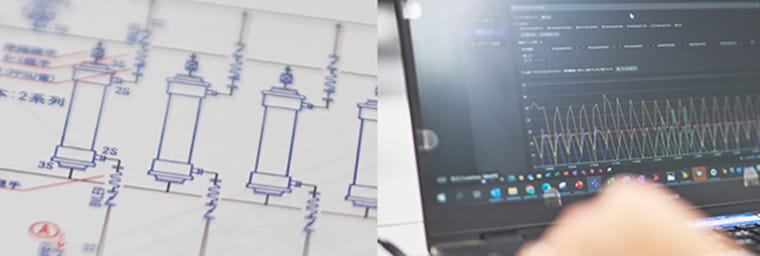A New Option for Converting Wastewater into Resources
As global water shortages intensify and efforts to achieve the SDGs become essential, technologies that convert wastewater into reusable water are increasingly important for corporate activities. Microza® membrane filtration solutions provide advanced water purification and cost efficiency, ensuring compliance with wastewater discharge standards and enabling water recycling. These solutions support reduced environmental impact and sustainable growth.
Microza® Long-Standing Trust and Track Record
For over 40 years, Microza® has been used in facilities of various sizes and regions worldwide, meeting diverse water treatment needs. Its proven durability and reliability, backed by years of technical expertise and experience, provide strong support for customers.
Reuse of Industrial Wastewater and Sewage with Microza®
Progressing climate change is causing a serious depletion of water resources worldwide. Companies and municipalities face shortages of tap and industrial water, making it necessary to reuse wastewater and reduce discharge volumes. Prompt action is also required from the perspective of the SDGs. However, conventional treatment technologies often do not achieve sufficient water quality, and many sites face challenges such as determining which wastewater to reuse and how to specifically reduce water usage.
To address these challenges, Microza® offers UF (ultrafiltration) membrane technology specialized for wastewater recycling, providing both high filtration performance and stable operation. It purifies various types of water, including industrial wastewater and sewage, to levels suitable for reuse, thereby achieving significant reduction in discharge volume and water consumption. This contributes to both environmental impact reduction and cost savings, helping companies progress toward the SDGs.
Enabling Compliance with Wastewater Regulations and Discharge Standards
In recent years, discharge standards have become more stringent, with increasingly strict regulations on COD, BOD, phosphorus, nitrogen, and other nutrients. Addressing these regulations poses significant technical and cost-related challenges, including retrofitting existing systems and stabilizing biological treatment processes. Microza® hollow fiber membrane solutions meet these needs with high filtration performance.
Reducing Coagulant Dosage and Sludge Treatment to Lower Operational Burden
In conventional coagulation-sedimentation plus sand filtration methods, operators must adjust the coagulant dosage according to raw water quality. The use of coagulants also generates sludge, requiring additional effort and cost for waste disposal. Especially with raw water of relatively high turbidity, the complexity of treatment increases, often resulting in higher chemical usage with conventional methods.
Microza® membrane filtration solutions can achieve high-quality treated water without coagulants, depending on raw water conditions. This allows for a significant reduction in coagulant usage. Immersed membranes are particularly advantageous for relatively turbid raw water, enabling stable treatment with minimal sludge generation. As a result, sludge treatment effort and costs are reduced, lowering the overall operational burden and enhancing efficiency.
Providing Flexible Solutions for Various Raw Water and Wastewater
Some factories and facilities require water recycling tailored to unique conditions and water quality characteristics, such as seawater desalination or oil detection in wastewater. Meeting these needs requires comprehensive expertise in membrane selection, system design, and operational know-how.
Based on 50 years of membrane filtration technology and extensive operational data, Microza® provides customized system designs optimized for each customer's specific water quality conditions.
Finance Services for Overall Cost Optimization
Microza® offers finance services to optimize total costs from installation to operation.
Support is provided not only through the supply of membranes and equipment, but also from a comprehensive perspective that includes installation and operating costs. This approach improves short-term cash flow and enhances long-term economic efficiency.








